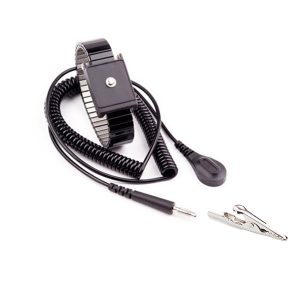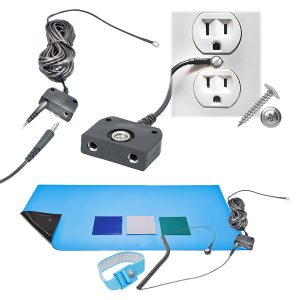Prices
| Sizes | Qty 1-9 | Qty 10+ |
|---|---|---|
| 24" x 50' | $443.78 USD | $406.80 USD |
| 30" x 50' | $554.72 USD | $508.49 USD |
| 36" x 50' | $665.66 USD | $610.19 USD |
| 48" x 50' | $887.54 USD | $813.57 USD |
• 2-layer static dissipative rubber matting for
ESD grounding in ANSI / ESD S20.20 compliant work areas for static control.
ANSI / ESD S4.1 and S7.1 compliant for cart, floor, shelf, table, and tray liner uses.
| Sizes | Qty 1-9 | Qty 10+ |
|---|---|---|
| 24" x 50' | $443.78 USD | $406.80 USD |
| 30" x 50' | $554.72 USD | $508.49 USD |
| 36" x 50' | $665.66 USD | $610.19 USD |
| 48" x 50' | $887.54 USD | $813.57 USD |
► Meets ANSI / ESD STM 4.1 Standard using FTMS 101C Method 4046.
► Lead-Free. Recyclable. Meets European Union (EU) Restriction of Hazardous Substances Directive (RoHS) regulating the reuse of products used in electrical and electronic equipment.
| Properties | Units | Typical alues | Test Method |
|---|---|---|---|
| Material | - | Nitrile Butadiene Rubber / Carbon | - |
| Thickness | Inches | .08 | ASTM D-2103 |
| Thickness | Millimetres | 2 | ASTM D-2103 |
| Tensile Strength • Top Layer | kg / sq. cm | > 120 | ASTM D-412 |
| Tensile Strength • Bottom Layer | kg / sq. cm | > 160 | ASTM D-412 |
| Tear Strength • Top Layer | kg / sq. cm | > 90 | ASTM D-412 |
| Tear Strength • Bottom Layer | kg / sq. cm | > 100 | ASTM D-412 |
| Elongation • Top Layer | % | 350 | ASTM D-412 |
| Elongation • Bottom Layer | % | 250 | ASTM D-412 |
| Hardness • Top Layer | Shore A | 50 | ASTM D-2240 |
| Hardness • Bottom Layer | Shore A | 60 | ASTM D-2240 |
| Gravity • Top Layer | - | 1.3 | ASTM D-792 |
| Gravity • Bottom Layer | - | 1.4 | ASTM D-792 |
| ESD Surface Resistance • Top Layer | ohms / square | < 109 | ASTM D-257 |
| ESD Surface Resistance • Bottom Layer | ohms / square | < 105 | ASTM D-257 |
| Volume Resistivity • Top Layer | ohms / square | < 108 | ASTM D-257 |
| Volume Resistivity • Bottom Layer | ohms / square | < 104 | ASTM D-257 |
| Static Decay | seconds | < 0.01 | EIA-541 |
| Temperature Tolerance | Fahrenheit / Celsius | 187F / 86C | - |
• The grounding cables should be common point grounds to connect wrist straps to your workstation or mat grounds to bond the roll separately onto the floor.
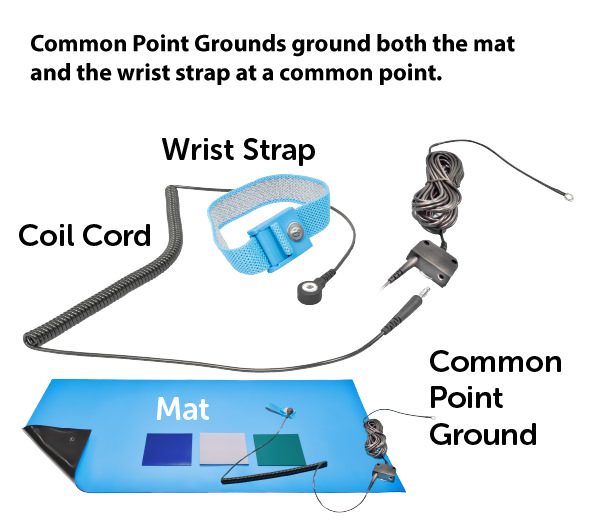

The top anti static side of the mat collects static off of hands, feet, tools, and equipment laid on top of it at a static dissipative rate, (1 x 106 to 9 x 108 ohms / square).
The bottom of the mat then conducts static to ground at a conductive rate, (1 x 103 to 9 x 104 ohms / square).

However, if the mat is laying on top of a bench or floor made of an insulating material (like wood tables) you will need to install snaps and connect the mat to an electrical outlet with a grounding cable.
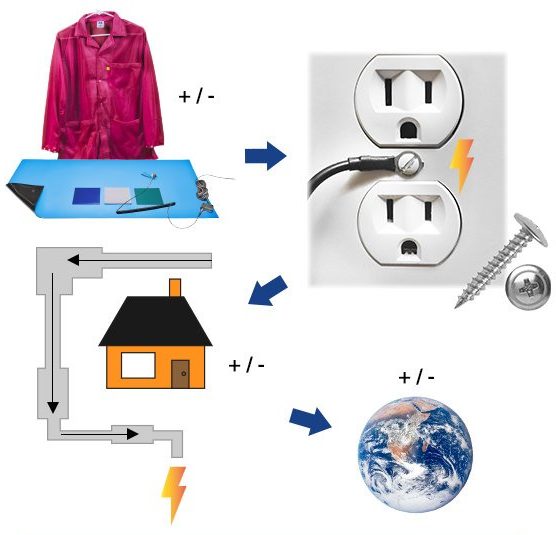
Multiple grounding cables can be attached to the same electrical outlet. They should not be “daisy-chained” together. Instead, directly connect the grounding cables to the electrical outlet.
Electrical outlets typically are the best path to ground the mat in any building because they follow the piping to the Earth’s electrical field underneath the building.
When connected to the electrical outlet, the mat is in electrical balance with the positive and negative charges of the building you are using it in.
The border line between conductive and static dissipative is 1 million ohms per square. This is also referred to as 1 meg ohm or 1 x 106 ohms.
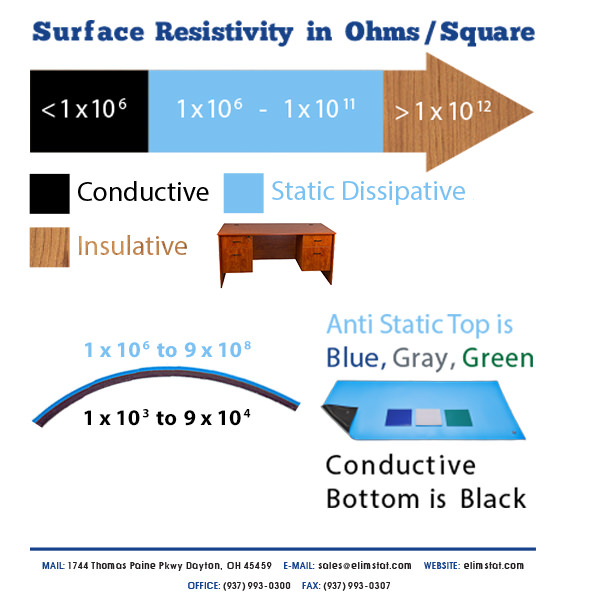
To satisfy the ANSI / ESD S4.1 Worksurfaces – Resistance Measurements test standard the top static dissipative part of the mat was measured using resistance-to-groundable point and resistance point-to-point tests.
ANSI / ESD S4.1 guidelines at section 8.0 recommend resistance-to-groundable point (RTG) tests should find the top surface of grounded mats measure ESD resistance between 1 x 106 and 1 x 109 ohms.
Resistance point-to-point (also known as top-to-top or RTT) tests should measure the ESD resistance of the top surface of the mats at greater than or equal to 1 x 106 ohms.
As viewable in our diagrams, all 5300 Series mat samples were recorded within the acceptable range between 1 x 106 and 1 x 109 ohms, regardless of humidity, to meet the current S4.1 standard.

In our low relative humidity test, the sample with the least resistance measured 1.2 x 107 ohms.
The mat sample with the highest resistance measured 3.9 x 107 ohms / square.
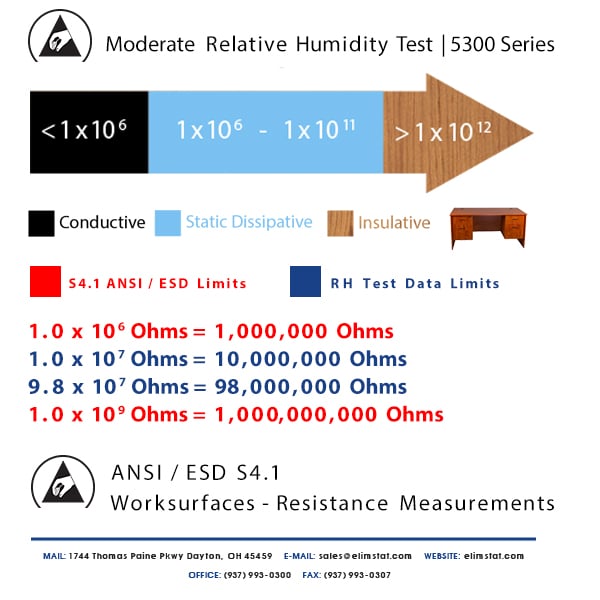
In our moderate relative humidity test, the sample with the least resistance measured 1.0 x 107 ohms.
The mat sample with the highest resistance measured 9.8 x 107 ohms.
